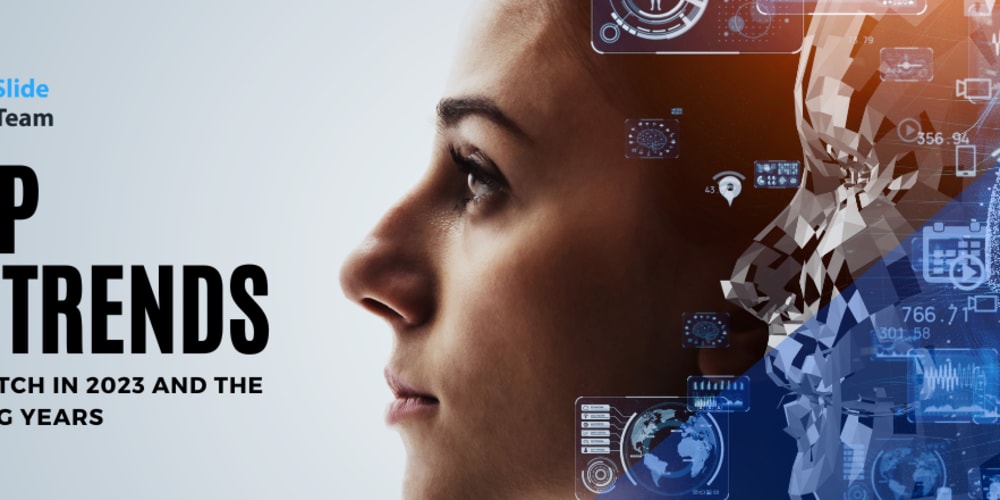
tldr
- 📈 Generative AI is expected to be adopted by over 80% of enterprises by 2026.
- 👩💻 BYOAI is becoming a workplace trend.
- 🔓 Open-source models are gaining popularity over proprietary models.
- 💰 AI hallucination insurance is emerging as a new market.
- 👨💻 AI assistants are predicted to be used by 75% of programmers by 2028.
- 🔒 AI TRiSM is becoming increasingly important for managing AI systems.
- 👥 AI-powered personalization is expected to be used in 33% of all new applications by 2026.
- 🔬 Quantum AI is a rapidly emerging field.
- ⚖️ AI regulation and ethical AI are becoming increasingly important.
summary
The article discusses the top 10 AI trends for 2025, focusing on generative artificial intelligence (GenAI), Bring Your Own Artificial Intelligence (BYOAI), open-source models, AI hallucination insurance, AI assistants for coding, AI Trust, Risk, and Security Management (AI TRiSM), AI-powered personalization, quantum AI, AI regulation, and ethical AI. GenAI is expected to be adopted by over 80% of enterprises by 2026, and BYOAI is becoming a workplace trend. Open-source models are gaining popularity over proprietary models, and AI hallucination insurance is emerging as a new market. AI assistants are predicted to be used by 75% of programmers by 2028, and AI TRiSM is becoming increasingly important for managing AI systems. AI-powered personalization is expected to be used in 33% of all new applications by 2026. Quantum AI is a rapidly emerging field, and AI regulation and ethical AI are becoming increasingly important.starlaneai's full analysis
The discussed AI trends for 2025 indicate a rapidly evolving AI industry, with significant advancements in various areas of AI. The widespread adoption of GenAI by enterprises, the growing workplace trend of BYOAI, and the increasing popularity of open-source models over proprietary models indicate a shift towards more accessible and democratized AI technologies. The emergence of AI hallucination insurance as a new market and the increasing importance of AI TRiSM for managing AI systems indicate a growing awareness of the risks and challenges associated with AI. The expected use of AI-powered personalization in a third of all new applications by 2026 and the rapid emergence of quantum AI indicate the potential for AI to significantly enhance user experiences and computational power. The increasing importance of AI regulation and ethical AI indicates a growing recognition of the need for responsible and ethical AI development. These trends are likely to shape the AI industry in the coming years, with potential implications for AI developers, researchers, engineers, ethicists, and regulators.
* All content on this page may be partially written by a clever AI so always double check facts, ratings and conclusions. Any opinions expressed in this analysis do not reflect the opinions of the starlane.ai team unless specifically stated as such.
starlaneai's Ratings & Analysis
Technical Advancement
85 The article discusses several advanced AI technologies and trends, such as GenAI, BYOAI, AI TRiSM, AI-powered personalization, and quantum AI, indicating a high level of technical advancement.
Adoption Potential
75 The adoption potential of these AI technologies is high, as indicated by the predictions of widespread adoption by enterprises and the growing workplace trend of BYOAI.
Public Impact
80 These AI technologies have the potential to significantly impact the public, particularly in terms of personalization and the use of AI assistants for coding.
Innovation/Novelty
90 The article discusses several novel AI technologies and trends, such as AI hallucination insurance and quantum AI, indicating a high level of novelty.
Article Accessibility
70 The article is fairly accessible, with clear explanations of complex AI technologies and trends.
Global Impact
80 The discussed AI technologies have the potential to have a global impact, particularly in terms of AI regulation and ethical AI.
Ethical Consideration
85 The article discusses the importance of ethical considerations in AI, particularly in relation to AI hallucination insurance and AI regulation.
Collaboration Potential
75 The discussed AI technologies have high collaboration potential, particularly in terms of open-source models and AI TRiSM.
Ripple Effect
80 The discussed AI technologies have the potential to affect adjacent industries or sectors, particularly in terms of AI-powered personalization and quantum AI.
Investment Landscape
85 The discussed AI technologies have the potential to significantly affect the AI investment landscape, particularly in terms of GenAI and quantum AI.
